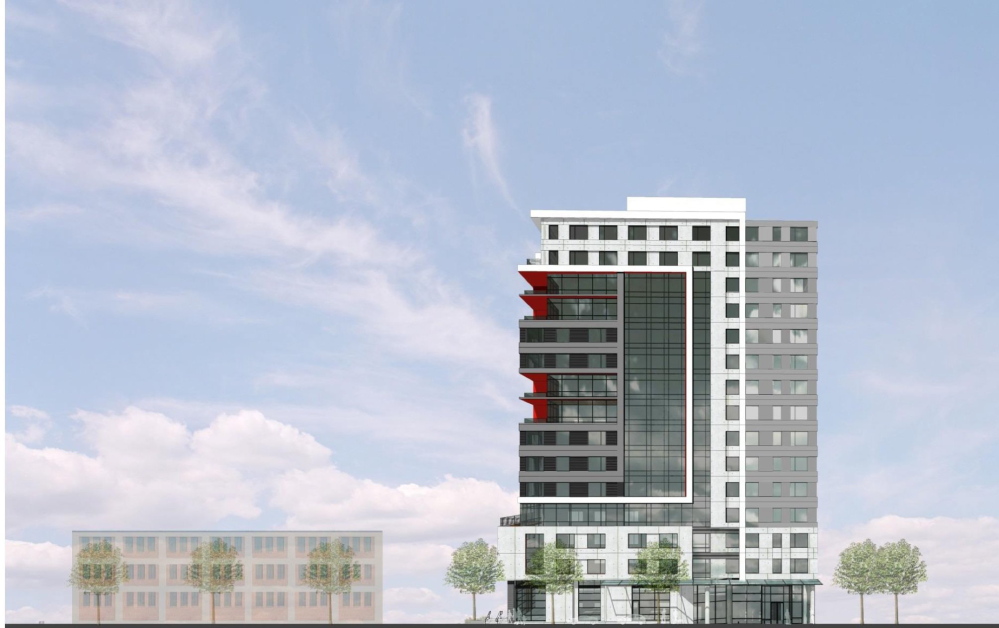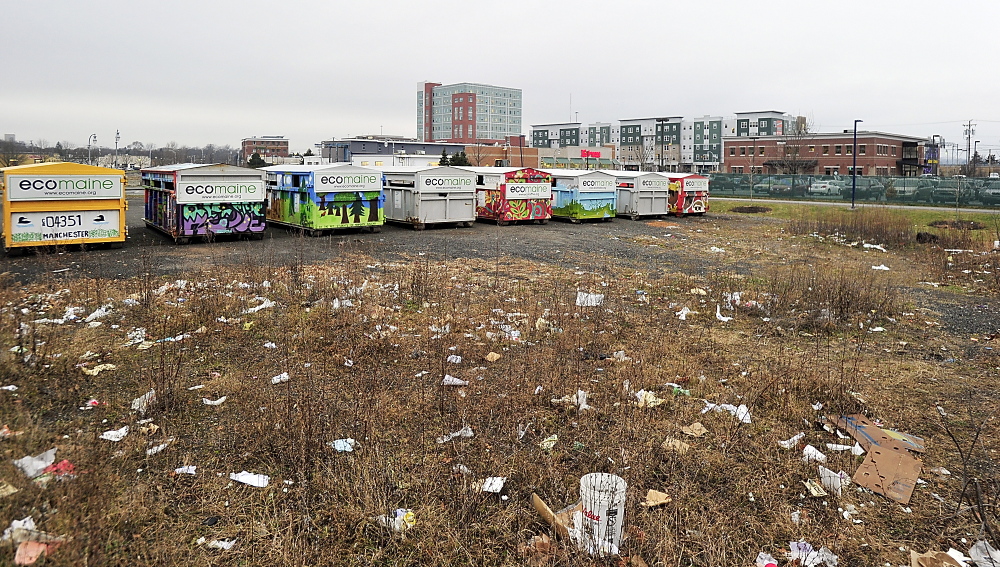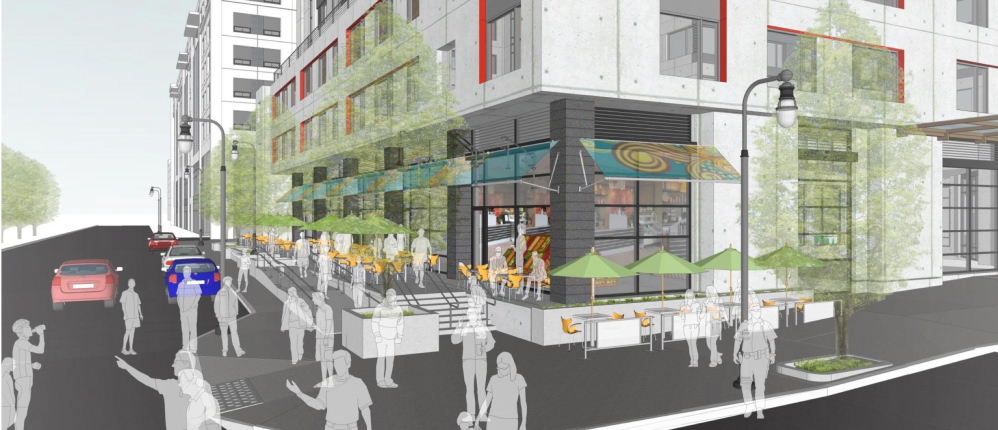Dozens of residents from around Greater Portland weighed in Tuesday night on an ambitious mixed-use development that could transform a former industrial neighborhood and alter Portland’s skyline for years to come.
After hearing them, the city’s Planning Board decided to postpone its decision on the first phase and master plan of the project in Bayside, called midtown.
“This is a huge project,” said Chairwoman Carol Morrissette. “We have invested a lot of time into this project. I believe it’s only fair that, given the impact of this project, that we need to give this our utmost attention.”
The board plans to consider midtown again in January.
About 50 people spoke during a 2½-hour public hearing. Opponents outnumbered supporters by a 2-to-1 ratio, arguing that the 165-foot-tall towers proposed along Somerset Street would be too big for Portland and would negatively affect the Bayside Trail, portions of which would run past the project.
Jessica Moore, who lives in the city’s Rosemont neighborhood, called the design “uninspired and generic.”
“I think this is a fine project for Newark, N.J., or Miami, Fla., or maybe even Boston, but not for Portland,” Moore said.
Longtime Bayside residents such as Steve Hirshon said the project could help jump-start the neighborhood and increase use of the trail, which he said now attracts illicit activity.
“I’m a little tired of being talked at by people living in other neighborhoods,” Hirshon said. “We’re looking forward to having 200 new neighbors in Bayside.”
Construction companies and tradesmen also supported the project, as did the Portland Community Chamber.
Midtown, which could take a decade to complete, envisions four 15-story residential towers along Somerset Street and two parking garages for 1,100 vehicles. First-floor retail space would be included throughout the development, which would be built in three phases.
The first phase, which could start early next year, calls for a 165-foot tower with 235 market-rate apartments, a 705-vehicle garage and 39,000 square feet of retail space. All but 6,500 square feet of retail would be along the 320-foot-long parking garage.
The project is proposed on nearly 3.5 acres of city-owned land on Somerset Street. The city bought the former rail yard property in 2001 and acquired additional land when it relocated a junkyard from Bayside to Riverside Street.
In 2008, the Miami-based Federated Cos. agreed to buy 3.49 acres of the former rail yard land for $2.3 million, contingent on city approval of the development plan.
City leaders and residents have long wanted to transform Bayside from an industrial wasteland into a world-class gateway and vibrant neighborhood. While economic development has occurred, people have watched as ambitious proposals, including a civic center and several office buildings, have fallen by the wayside.
Rob Sylvain, a member of the Bayside Neighborhood Association’s board of directors, seemed to sum up the frustration of longtime residents.
“It’s a difficult issue,” said Sylvain, noting that he agrees with both sides. “Many of us in Bayside are just as tired of the half-decent projects that have been scuttled as we are with the half-crappy projects that have been approved.”
Peter Monro, who co-founded Keep Portland Livable, which opposes the scale of midtown, argued for several changes to the plan, including reducing the buildings’ height and increasing pedestrian pathways.
His partner, Timothy Paradis, submitted 335 signatures from people who want the city to reconsider its deal with the Federated Cos.
While opponents argued that the development is not in line with the city’s master plan, the city’s staff disagreed.
The staff said in a memo to the board that the plan is “largely consistent” with the Vision for Bayside, which was adopted into the city’s master plan in 2001.
That plan calls for a dense mixed-use neighborhood with housing and economic development opportunities. It envisions 940 housing units, 950,000 square feet of open space and 230,000 square feet of retail space. It also calls for a walkable neighborhood, geared toward public transportation.
Robert Metcalf, a landscape architect who is working on the project, said midtown would fill a need for the neighborhood.
“Bayside is growing,” Metcalf said. “This project will bring life to support that in terms of the residential density described in the Vision for Bayside.”
Opponents said the development would create dangerous winds and “superblocks” that aren’t friendly to pedestrians, but the project’s architect, David Hancock, said the blocks would be well within the neighborhood norm. And a wind study concluded that the buildings would generate only uncomfortable winds, mostly during the winter.
“There are no dangerous winds likely because of this development,” Hancock said.
Other opponents, like Ashley Sallisbury of the West End, said midtown is too much, too fast.
“It’s a Walmart solution for what is a mom-and-pop town,” she said.
Randy Billings can be contacted at 791-6346 or at:
rbillings@pressherald.com
Twitter: @randybillings
Send questions/comments to the editors.







Comments are no longer available on this story